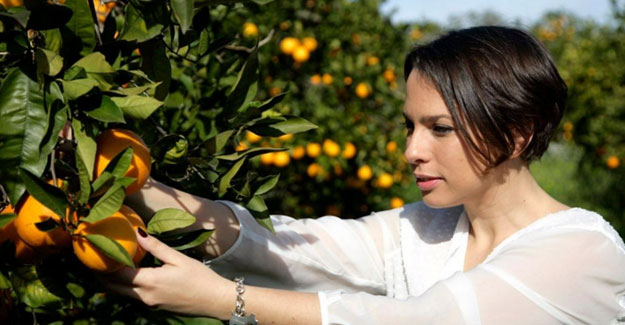
Citrus Fabric Gives Fashion Industry A Vitamin Boost
Orange jam, orange cake, orange juice, orange jelly, orange liqueur and orange marmelade. Citrus fruits can be squeezed quite a bit, so to speak. But turning oranges into fabric is something entirely new. You shouldn't picture jackets of orange peels stuck together, Enrica Arena (35) from Sicily makes clear. She is the co-director of Orange Fiber, a start-up that makes fabrics from citrus fruits. It fits entirely into the trend of making as much "environmentally neutral" clothing as possible. How should we picture orange fabric? This is fabric made from squeezed lemons and oranges, or rather citrus pulp. From the pulp, artificial cellulose is made. That in itself is not new, because artificial cellulose fibres, like viscose, are made from dissolved pulp, mainly from wood. Citrus is definitely new. "We extract the cellulose from citrus fruit here in Sicily, then partners elsewhere in Europe convert it into spun or textile fibres. Back in Italy, the fabrics are woven and finished. We supply rolls of fabric to the clothing industry," says Enrica. Citrus fabrics "The fabrics we make now are made from a continuous fibre, which can at most be processed with one more thread. Our fabric thus resembles silk and is clearly an alternative to it," says Enrica. Orange Fiber is a light fabric, ideal for use in sweaters and scarves. Salvatore Ferragamo is the first fashion house to have used Orange Fiber. They have created an exclusive collection with prints by Italian designer Mario Trimarchi. For Conscious Exclusive, H&M's flagship collection, they created a boho style (bohemian style, ed.) short blouse partially made from Orange Fiber. "We also provided the fabric for a tie from the collection of the famous tie maker Marinella." "This summer we are going to present a new fabric. It is not made of a long fibre but of a short one. The disadvantage of a continuous thread is that it can only be processed with one other thread at the most, and the fabric ends up having little elasticity. The advantage of short fibres is that they can be more easily mixed for spinning. You can do more with that, also because it is the more commonly used process in the production chain. This new fabric will be much more elastic and share qualities of the other fibres blended with it. So in the future, citrus fibres may also be used in leisure wear, including denim," she said. Enrica is the first to develop this technology for citrus fibres. "Adriana Santanicito, my partner in the company, was inspired to create fabrics from citrus pulp in 2012 during her studies in fashion. We had the first tests carried out at the Faculty of Chemistry and Materials of the Polytechnic University of Milan. In 2014, we founded the company and then we grew step by step: From a feasibility test to patent application to the first prototype and participation of private investors. In 2016, our first pilot plant was launched," relates Enrica. Environmental footprint In Italy, more than 700,000 tons of citrus juice by-products are produced every year. The disposal of this waste, even if it is organic, involves high economic and environmental costs. There are also other innovative ways of trying to use citrus pulp as responsibly as possible. There are innovative companies that turn it into flour, yet others convert it into biocomposites or use pulp in 3D printing. "We want to limit ourselves to specialising in textiles. But I can imagine us becoming an innovative aggregator of organics in the future. We could create a platform for the organic fabrics market to create synergy with similar products and producers," hopes Enrica. (Innovation Origins)
Textile Excellence
If you wish to Subscribe to Textile Excellence Print Edition, kindly fill in the below form and we shall get back to you with details.








